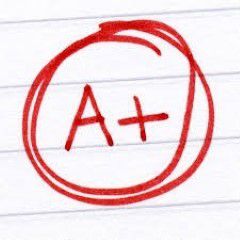LAB 9 Complete Solution
School of Math/Stat
Data from a British government survey of household spending may be used to examine the relationship between household spending on tobacco products and alcoholic beverages.
You can find this data on the Canvas website. The dataset is called “tobacco.xls”.
(2 points) Tobacco spending is the explanatory variable, and alcohol spending is the response variable. What is the equation of the least-squares regression line?
(4 points) Show a scatterplot of the data. Include the least square regression line on the graph. Describe the form, direction and strength of your data.
(1 point) What % of the variation in alcohol spending is explained by the least squares regression line?
(3 points) Give a 98% confidence interval for the average rate of change of alcohol spending. (Hint: This is another way to say “slope”)
(3 points) Are tobacco spending and alcohol spending independent? Perform a test and state the hypotheses, P-value, and conclusion in terms of the question.
(3 points) Make a normal probability plot.
Do the points fall around a straight line? (Yes or No)
Does the distribution look normal? (Yes or No)
(4 points) Make a residual plot.
Do the residuals fall randomly around the 0 reference line? (Yes or No)
Can you find any clear pattern in the residual plot? (Yes or No)
Are there any outliers? (Yes or No)
If “Yes”, where is the outlier? Please circle the outlier point in the residual plot, (and if you have time, find its corresponding region in the dataset).
SPSS instructions for Lab 9
Download the dataset from course website and save it on your desktop and open it by SPSS.
(1) LSR Equation: Analyze à Regression à Linear
Move “alcohol” to the Dependent box and “tobacco” to the Independent(s).
Click “Statistics” on the top right side. Check “Confidence Intervals” box. And change the confidence level if necessary à “Continue”.
(This is for #4.)
Click “Plots” on the top right side. Check “Normal probability plot” box. à “Continue”.
(The plot will be used for #6.)
Click “Save” button on the top right side. You will see the “Linear Regression: Save” dialogue box. Check “Unstandardized” box under “Residuals”. (The residuals will be used for #7.)
Then click on “continue” à “OK”.
Based on the coefficients table in the output, write down the LRS equations.
(Note: For the homework (not this lab), if you have to get a “Mean Prediction Interval”, you need check “Mean” box under “Prediction Intervals” in the “Linear Regression: Save” dialogue box and please refer to step (4).)
(2) Scatter Plot with Regression Line (for problem #2):
Graphs à Legacy Dialogs à Scatter/Dot à Simple à Define à
Choose X (independent/explanatory variable) and Y (dependent/response variable) according to the problem. Then click on “OK”.
Adding regression line: Double click on the scatterplot in the output, so that the “Chart Editor” window is popped up.
Click on any point in the plot once, such that all the points are highlighted.
Click on the “add fit line” icon (an icon with a scatterplot and a LSR line) on the top of the chart editor. The LSR line will be added. Then close the Chart Editor window.
(3) Residual Plot with Reference Line (for problem #7): Go back to the SPSS data Editor, you will find a column named “RES_1”, which are the saved residuals.
Graphs à Legacy Dialogs à Scatter/Dot à Simple à Define à
Let “Unstandardized Residuals” be Y and “tobacco” be X. Then click on “OK”.
Adding reference line: Double click on the scatterplot in the output, so that the “Chart Editor” window is popped up. Select the “Options” tab at the top of the page. Under that, select “Y Axis Reference Line.” Fill out “0” in the “Y Axis Position” Then click “Apply” and close the Editor Window.
LAB 9 Complete Solution
56.9% of the variation in alcohol spending is explained by the least squares regression line. 4. (3 points) Give a 98% confidence interval for the average rate of change of alcohol spending. (Hint: This i...





Macgyver
Senior JournalistSell Your Solution Report Solution Support Center
Online Users
-
 Macgyver
Today
Macgyver
Today





A+ - Thank you!
Thanks for the positive feedback!